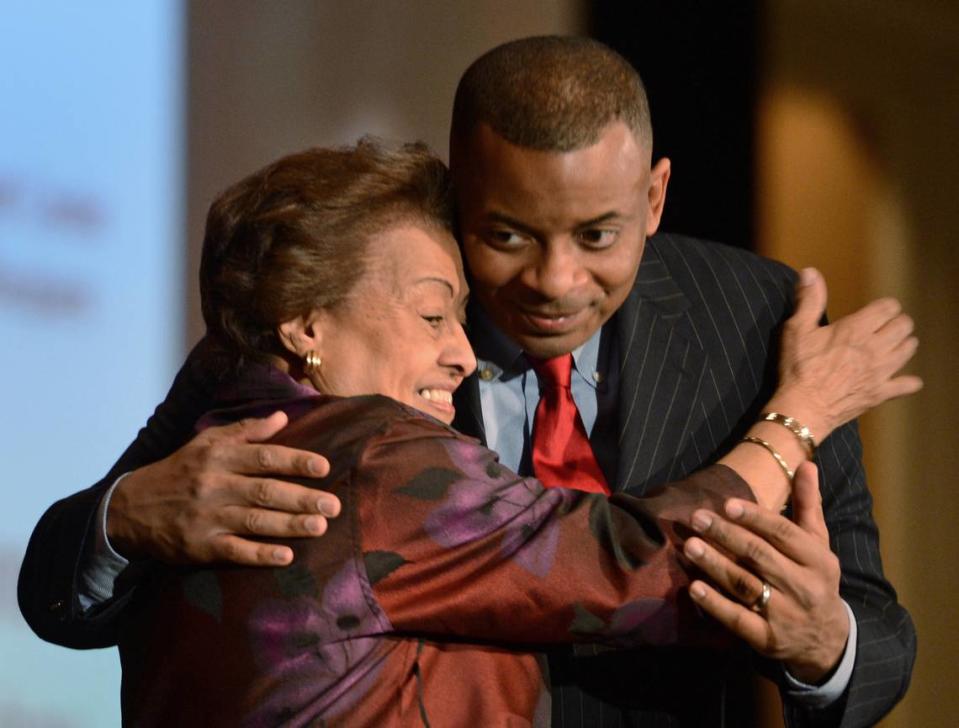After starting as a dream, McCrorey Heights grew into a neighborhood full of notables
McCrorey Heights began as a dream.
The dreamer? H.L. McCrorey, who in 1907 became the second Black man to serve as president of Charlotte’s Johnson C. Smith University and who about four years later would buy a large nearby swath of what was then farmland bordering Beatties Ford Road.
The dream? A modern suburb for college-educated Black men and women — specifically those educated at his college — in a direct response to the city’s burgeoning all-white suburbs barring African Americans from moving in because of the color of their skin.
It wound up taking decades for that dream to become a reality.
In addition to a demanding job, McCrorey had a growing and changing family: His first wife died young, in 1911, and left him with four children; he married his second wife, Mary (a longtime JCSU educator and YWCA pioneer) in 1916. Then in the early 1920s, he was involved in a land dispute spurred by the city’s insistence on needing some of his for its water works facility. McCrorey lost the dispute, and a chunk of his neighborhood went with it. The Great Depression and World War II also challenged sales of his lots.
But following the end of the war, the boom finally began, as the U.S economy rebounded and as McCrorey wound down his career at the helm of JCSU.
By the time he retired in 1947, lovingly constructed ranch-style brick bungalows were springing up all over the neighborhood, which was being built on a rectangular grid of straight streets consisting of avenues named for famous American patriots — including Washington, Madison, Van Buren.
After McCrorey’s death in 1951, his daughter Novella McCrorey Flanagan took on the task of selling lots, and over the next two decades McCrorey Heights would fill up with houses belonging to a who’s-who of influential Black educators, clergy, doctors, lawyers, politicians and civil-rights activists.
Here is a sampling of just a few of the scores of historically important residents from the neighborhood’s past — and present:
Charles Bell
Where he lived: 1645 Madison Ave.
Notable for: His work as a civil-rights attorney. Even before the 1954 Brown v. Board of Education desegregation decision by the U.S. Supreme Court, Bell filed a case against the Gaston County Board of Education to end segregation at Hunter Huss High School. And years before Rosa Parks’ famous protest, Bell braved arrest by sitting in a seat reserved for whites-only on a Gastonia bus. He died in 1999 at age 85.
Jeanne Brayboy
Where she lives: On Patton Avenue.
Notable for: Her work as an arts educator, civic leader and civil-rights pioneer. Brayboy was a teacher in Charlotte-Mecklenburg Schools from 1953 to 1993, including in 1969, when she became one of the first African American teachers to integrate the district. After retiring, Brayboy served on a number of boards, including the N.C. School of the Arts, Central Piedmont Community College, The Mint Museum of the Arts, and the Gantt Center. Now 93, she still lives in the home she built with late husband Jack Brayboy, a noted JCSU administrator for whom the university’s gymnasium is named. And McCrorey Heights neighbors love mentioning this: In the early ’50s, before marrying Jack, Jeanne briefly dated Martin Luther King Jr.

Mildred Grier
Where she lives: On Madison Avenue.
Notable for: Her longevity — she will turn 101 years old in May, and is one of just a small handful of residents who moved into the neighborhood as a professional in the 1950s and never left. A Charlotte native, she made history for becoming a member of Second Ward’s first 12th-grade class, then made history again in 1941 as part of the first freshman class of women at JCSU — which she attended on a full scholarship. She later received a master’s degree from Columbia University’s Teachers College in New York City, and spent her career as a beloved educator.
Reginald Hawkins
Where he lived: 1703 Madison Ave.
Notable for: His work as a civil-rights activist. Hawkins — a graduate of JCSU who worked by day as a dentist — was key in integrating Charlotte public spaces, hospitals and schools. He played a significant role in the desegregation of Charlotte-Mecklenburg Schools; escorted Dorothy Counts home after her history-making first day at Harding High; and was a plaintiff in the Swann case that led to nationwide school busing. His Madison Avenue home was one of four west Charlotte houses occupied by civil-rights leaders that were firebombed on a single night in 1965. He died in 2007 at age 83.
Rowe Motley
Where he lived: 1726 Madison Ave.
Notable for: Serving as the first Black commissioner in Mecklenburg County and a trailblazer for Black politicians in Charlotte. Motley — a graduate of N.C. A&T State University and a former Army lieutenant — was elected to the Board of County Commissioners in 1974, during a period when the city was in a state of racial transition. He would go on to be appointed to fill the 22nd District state Senate seat in 1980 and at one point was chairman of the National Black Democratic Committee. He died in 2010 at age 84.
Thomas Wyche
Where he lived: 1635 Oaklawn Ave.
Notable for: His work as a civil-rights attorney. When Wyche began practicing law in Charlotte in 1961, he was one of only four Black attorneys in the area. He represented a number of African Americans in cases involving marches, sit-ins, freedom rides, and protests against segregation policies at schools, restaurants and recreational facilities. Perhaps the most famous case he argued led to the desegregation of Revolution Park golf course. He died in 1997 at age 77.

